#bourbon vendôme
Explore tagged Tumblr posts
Text

King henry IV of France. By Pierre Duflos.
#pierre duflos#royaume de france#maison de bourbon#henri IV#roi de france#roi de france et de navarre#henri iii#roi de navarre#vive le roi#royaume de navarre#vert galant#henri de bourbon#vendôme#bourbon vendôme#Guerre de religion#full length portrait#la France et la Navarre#full-length portrait#kingdom of france#house of bourbon#Receuil des Estampes#costume de sacre#coronation robes#royalty
5 notes
·
View notes
Text

The descent of the statue of Napoleon I from the top of the Vendôme column during the Bourbon Restoration, 8 April 1814
George Emmanuel Opiz
#La descente de la statue de Napoléon 1er du haut de la colonne Vendôme#George Emmanuel Opiz#Opiz#opitz#Georg Emanuel Opiz#napoleonic#napoleonic era#napoleon bonaparte#first french empire#french empire#19th century#history#Vendôme#place Vendôme#Vendôme column#1800s#print#Paris#restoration era#restoration#bourbon restoration
40 notes
·
View notes
Text
Passive resistance
Condé feared that the king would become the tool of a nonentity or coquette, but it did not enter his head that the monarch could use the crutch of a friendship to realize his own political goals. Marie was even less astute, reportedly devising the strategty of surrounding him with persons of "mediocre capacity and little spirit." Among these was the man who would help Louis overthrow his mother and her favorite.
His name was Charles d'Albert, sieur de Luynes. Stories circulated that Luynes and his two younger brothers shared the same best suit, and that a hare could quickly jump across their family lands. Yet they were of the same lesser nobility that had predominated at the Estates General. Henri IV's friendship for Luynes' father, a soldier of fortune, caused him to place the younger Luynes among the dauphin Louis's noble comrades. The gentilhomme began to look after the heir's birds of prey; and the young boy's fondness for the gentle, handsome, and supportive middle-aged man grew.
By the end of 1614 Louis's attachment was so strong that it bothered Queen Mother Marie, her Italian favorite Concini, and the king's former governor, Souvré. Yet Luynes remained in Louis's favor and his brothers also gained easy access to the king. How did the king prevent a sequel to his mother's earlier banishment of Alexandre de Vendôme? We need follow only one example. In October 1614, Souvré made the Albert brothers stay away from the royal bedchamber, even during the ceremonial lever and coucher, hoping to supplant the gentleman-favorite with his own son, Courtenvaux. Someone told the king that his former governor was responsible, and Louis countered by treating Souvré with silence and dark looks, until the mortified man got the queen mother to negotiate an accommodation.
In employing passive resistance here, Louis had discovered the only way he could assert himself, considering the queen mother's imperiousness and his own timidity. The son also held his ground in refusing to tell his mother who had told him of Souvré's maneuver against Luynes, until she promised not to punish that individual. Equally revealing was the fact that Louis did not bear a grudge against Souvré or Courtenvaux, both of whom he actually liked. He paid for all this agitation with a soaring pulse and symptoms of illness. This powerful combination of indirect strategy, fierce loyalty, forgiveness, and sacrifice of personal health, then, separates the real adolescent Louis XIII from both the weakling and the vindictive Louis of historical fiction and scholarship.
If the court was baffled by the dynamics of Louis's friendships, it was equally unaware that his interests always had a serious element, even when they appeared frivolous. When he sketched with pen and ink, it was of horses pulling cannon, although incongruously placed in a child's setting of trees, churches, and village brides. Louis dutifully took part in court masques and ballets; however, his dislike of elaborate protocol and showing off caused him to refuse outright to lead his sister Elisabeth in a dance before the Spanish ambassador. The Spaniards were disconcerted by this affront so close to the marriages of Louis and Elisabeth to the children of King Philip III of Spain, Anne of Austria and the future Philip IV. The French court poet, Malherbe, could only comment: "If age and love don't change his ways, he will be inquisitive only of things that are solide."
A. Lloyd Moote - Louis XIII the Just
#xvii#a.lloyd moote#louis xiii the just#louis xiii#marie de médicis#charles d'albert de luynes#henri ii de bourbon-condé#concino concini#gilles de souvré#alexandre de vendôme#élisabeth de france#anne d'autriche#philippe iv d'espagne#malherbe
4 notes
·
View notes
Text
Marie of Luxembourg, Countess of Saint-Pol and Soissons and Vendôme
Marie of Luxembourg, Countess of Saint-Pol, Soissons and Vendôme from the Book of Hours of Catherine de’Medici While researching my book about the women of Burgundy, the name of Marie of Luxembourg arose as she married her maternal uncle Jacques of Savoy, Count of Romont. Yolande of France, Duchess of Savoy, had to contend with the political shenanigans of Jacques during her reign as regent for…
#Charles the Bold#Charles V#Charles VIII#Count of Vendôme#Countess of Saint-Pol and Soissons and Vendôme#Duke of Burgundy#Duke of Vendôme#Francis de Bourbon#Francis I#French history#Holy Roman Emperor#House of Bourbon#House of Luxembourg#King of France#Louis of Luxembourg-Saint-Pol#Louis XI#Marie of Luxembourg#Mary of Burgundy#Philip the Good#Picardy#Saint-Pol#Vendôme
0 notes
Text
Louis-Joseph de Bourbon-Vendôme (le grand Vendôme) - compilation of portraits and stuff

by Hendrik Scheffer, 1835.

by Jean-Gilbert Murat, 1837.






Documents of Louis-Joseph preserved in the Casa de las órdenes de Santa Elena (Andalucía).




Louis-Joseph de Bourbon, duc de Vendôme (1654-1714) lieutenant général des armées du roi by Jean-Baptiste Santerre




Nicolas de Largillière.

École française.




Detail of La Partenza del Generale Vendôme.






#visual#bourbon#bourbon-vendôme#louis-joseph de vendôme#le grand vendôme#im his biggest fan (the only fan he has)
0 notes
Text
Revolutionaries with a Hard Fate after the end of the revolution
Gâteau, Saint-Just's friend, whose loss he never recovered from. He died in despair in 1815 during the Bourbon Restoration.
Marie Angélique Lequesne, widow of Ronsin, later divorced Turreau, who was also active in the revolution. She had a terrible marriage with him (Turreau betrayed the Ronsin couple twice, once while Ronsin was alive, pretending to be his friend and stabbed him in the back when Ronsin needed supportwhile he was being attacked as one of the representatives of the Hébertist faction during the period of the factional infighting. The second time by horribly mistreating Marie-Angélique after that he married her , even having her whipped). You will see in the links I’m sending. She also lost a son during her lifetime. It’s possible Turreau separated her from her sons’ custody. In fact, to punish her for their separation, he made her live in poverty during three years and she had to seek help from a judge to return to France. It’s likely that this poverty lasted until the end of her life, as her daughter, Alexandrine, died in misery and poverty (Alexandrine, who was also a victim of her father Turreau). Here are the posts: Letter from Turreau to Ronsin and the Complex and The Day a Judge Confronted Turreau for His Actions
Marie-Anne Babeuf, widow of Gracchus Babeuf, who had been her husband’s right hand. Before the revolution, she had already lost a daughter due to a boiling water accident. Gracchus never recovered from this loss. Then, under the Directory, their other daughter, Sophie, died of malnutrition caused by the high prices of rations (Gracchus wrote a letter of despair in prison, saying that people like Boissy d'Anglas had condemned his daughter: "I had a seven-year-old daughter; I soon received the heartbreaking news that she died from the murderous reduction of the two ounces of bread."). She was pregnant when her husband was arrested, and she walked miles with her son Emile to try to save him. She may have even tried to help him escape, according to certain letters. She continued to fight after her husband's execution and was repeatedly arrested by the police. But her son Camille went mad and committed suicide. As for her other son, Caius, he died in Vendôme during the foreign invasion of France at the age of 17. It’s possible that she even outlived her last son, Emile, as, despite being known as a militant with a strong character in adversity, and being arrested by the police under the Directory and Bonaparte, her death date is unknown. Some say she was still alive when her last son, Emile, died. She also saw many of her friends die under the mockery of justice, including Topino-Lebrun, executed under Bonaparte (see Topino Lebrun: A Revolutionary Jacobin Close to Gracchus Babeuf) or her friend René Vatar, who died in deportation (he had campaigned for her release when she was imprisoned).
Claude-Antoine Prieur, who lived his last years very painfully. He lost his beloved daughter and granddaughter. His friend Lazare Carnot died in exile, and Prieur’s friends Frilley and Monnet did not return his friendship. See the very good post ( and sad ) post by @aedesluminis on Prieur’s tragic end: https://www.tumblr.com/aedesluminis/758618574216724480/nigrit-i-dont-think-she-cared-much-about-the?source=share
Jean-Nicolas Pache. He withdrew from political life. He was close to his children, especially Sylvie Audouin (according to Mathilde Larrère, she was a fervent Hébertist and therefore supported her father ideas). He survived his daughter, who often visited him, while watching everything he had worked for collapse. I already talked about Sylvie here quickly here and her role during the revolution and the Directory with her husband Xavier Audouin ( https://www.tumblr.com/nesiacha/767044131014033408/very-mediocre-and-horrible-quote-from-buzot?source=share) . I really have to do a post about pache one day btw
Prieur de la Marne, who died in exile so poor that there was not enough money for his funeral.
Feel free to add because I know I've overlooked many and they all deserve more information
P.S: I hesitated to put Sophie Momoro in it after everything that happened in her life afterwards but if she died in poverty and had a failed marriage at least she was able to have her 3 children and her husband was not like Turreau ( here about some of the life of Sophie Momoro https://www.tumblr.com/nesiacha/758994396416016384/life-and-fate-of-sophie-momoro-n%C3%A9e-fournier-and?source=share). But she still have a sad end.
Sources:
Antoine Resche
Jean-Marc Schiappa
Claude Mazauric
Bloche
Mathilde Larrère
#frev#french revolution#tragic fate#all deserve better#even if you didn't like all of them it's so sad
30 notes
·
View notes
Text
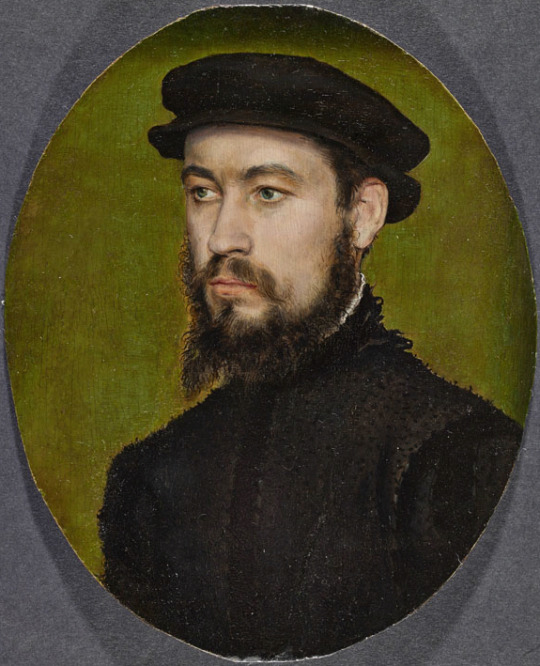
1545-1550 Corneille de Lyon - Presumable portrait of Jean de Bourbon-Vendôme
(Musée des Beaux-Arts de Dijon)
107 notes
·
View notes
Text
They cancelled The Serpent Queen and I am so fucking mad!!
I'm french and guess where do I live? In the Loire Valley!! My hometown, Vendôme, is where The House of Bourbon (the one we see in the show) is from. Their full name is actually de Bourdon-Vendôme, because there are three different branches and if we only mention "Bourbon", it's kind of confusing because we don't know which branch we speak of and Bourbon-Vendôme is the one Henri IV is from. Which means, the character that we see in the show lived in the castle located next to my elementary school! I was young but I can still see and hear my teacher telling my class "This castle next to us was a big deal.". Henri IV didn't live here but he came a few times, especially when his mother, Jeanne d'Albret, died and was buried here (along with Antoine and their first born son (and Louis, Antoine's brother)). So when Jeanne died in the show, in the story, they technically should have been in my hometown (and Antoine and Louis should have been already dead lol). Same as when Antoine and Louis went back home to their dads. François I, François II, Marie Stuart, Charles IX and Catherine came here. Sadly, the castle is just ruins now... But it makes me sad that they never mentioned the name of the town once. Even Reign mentioned it. I mean, everyone knows that Reign was more fiction than facts but still, they mentioned Vendôme in one of the latest episodes of the show and it's still one of my proudest moment 🥹
Since I live in Vendôme, it means that I live 30 min away from le Château de Chambord, where they filmed most of the show. I love going there whenever I can but sadly, I never got the chance to go there when they were filming... 💔 It was weird and funny to see how they edited the outsides of the castle. Some editing didn't make any sense but I get it. Also, the big gardens are from a completely different castle located in Villandry. So it was weird to see Chambord edited in the background. And it didn't make any sense when we would see Chambord fully and the gardens weren't there, haha.
Also, le Château d'Amboise was used two times and they kinda disrespected it 😅 I'm not entirely serious when I say this but I kinda I am. The first time is in the season one finale, when Mary "arrives" in Scotland. The second that I saw the location I said "Oh, Amboise" and then I saw the ocean next to it and realised that it was supposed to be Scotland 😭 The second time was in season two when Catherine visits Diane (who is still pretty young and most importantly, miraculously still alive in 1572 😭). When Diane and Catherine talk we discover that they are in "Anet" (where she died in 1566). I was so happy when they mentioned where they were in the story but I was like "but, but, it's Amboise, guys 😭". It's funny and confusing for me because I know those castles but it's perfectly fine for an audience who has no clue. Also, le Château d'Anet is a private property, so I don't know if they would have allowed the show to come and filmed there, but also I've seen a documentary a few months ago and the owner seems very sweet, so I don't know. They also used Amboise, the town, to be Paris, where Catherine's brother was supposed to build le Palais des Tuileries.
And last but not least, I wanna talk about Blois (20 min away from me, next to Chambord) Oooh, Blois is probably my biggest heartbreak from that show. In season one, it made sense to be in Chambord because this castle was François I's baby but he lived there for only a month. Henri II didn't live there but kept the constructions going. When Henri II died, François II didn't live there. Charles IX didn't live there either but just like his father before him, he kept the constructions going and consolidated it. Henri III and Henri IV didn't live there and didn't do anything to it (it's such an Anjou and Henri behavior if you ask me haha). But if Henri II, François II, Charles IX and Henri III didn't live there, then where did they live, you ask?! Well, they lived in BLOIS. Which means that the whole show should have been happening in le Château de Blois, not Chambord. Y'all have no idea how excited I was when I heard that season 2 was filming in Blois. I thought, finally, they are going to aknowledge the most important castle of the Valois! I mean they actually all lived there and this is where Catherine died!! When I say that that castle is important to the Valois' story, it's because it is. Do I need to tell you how disappointed I was when I saw season 2 last week? A) I was expecting multiple scenes in the castle and well, that didn't happen. B) I had to wait the very last episode to see what they filmed there. C) THEY DIDN'T EVEN FILMED IN THE CASTLE!!! We see all the Protestants walking across the bridge, we see a few streets that I'm not even sure if it's actually Blois and then we see the castle, in the background, behind all the protestants who are looking at a cathedral that is not even located there. THEY EDITED THE CATHEDRAL OF TOURS IN BLOIS 😭 It's not fair. Honestly, all the editing stuff didn't really bother me. I understand that they did whatever they needed to for the aesthetic of the show. But not mentioning once the name of the town that was important to the true Valois Kings and Queens is something that I truly don't understand.
The show is about the French history, is filmed in France and guess what? We had NO WHERE TO WATCH IT IN FRANCE. The show arrived like a week ago on Max and it's been n°5 in the top 10 since then. French people want to see their country in a show and support it, we have the proof and THEY CANCEL IT?! I am so upset. They could have give it a third and last season to wrap it up. Season 2 was so much better than season 1. The Valois siblings did bring so much more depth, especially Anjou.
I CAN'T BELIEVE THAT I'M LOSING KING ANJOU. The potential that he had was insane.
Okay, I'm gonna shut up now and cry about it 😭
13 notes
·
View notes
Text
Compagnon I... Six ans plutôt...
Un homme frappa à la porte de l'appartement de Evaniel, ce qui le surprit car peu de gens savaient où il vivait. Il était hésitant. Evaniel aimait vraiment sa solitude, même si la compagnie était bonne. "C'est Erik le fils de Michak! Monsieur Vendôme, j'ai été mandé par mon père pour une invitation à manger chez nous, ce soir. Faites nous ce plaisir cher Ami!"
Evaniel marqua un sourire mais soupira également. Bon ça ne sera pas pour ce soir la soirée enfouie dans les livres et les herbiers tout en buvant quelque bon bourbon, et finir sur la plage à jurer tous les dieux en direction de la mer. Il appréciait les soirées chez Michak, il était toujours très bien reçu, sa femme était une excellente cuisinière et leur fils était un esprit bien aiguisé. Quand à Michak, Evaniel allait finir par croire qu'il ne puisse se passer de lui. Ils passaient neuf mois sur douze en mer avec lui, à dormir dans la même cabine et pourtant il le reclamait même sur terre.
Evaniel ouvrit la porte à Erik. "Entre sacrebleu, ce vent va te rendre fou." Un vent d'autan soufflait fort depuis quelques jours. "Je suppose que vu l'heure, nous ferons le chemin ensemble? Assieds toi, prends un verre et je te laisse explorer la bibliothèque, le temps que je prenne un bain et me prépare. Il y a quelques nouveaux livres,je les ai récupéré aupres de cette charlatan de Rowena. Principalement de l'herboristerie, mais également un livre sur l'anatomie des êtres spectraux."
Erik ne se fie pas prier, Evaniel savait comment occuper le jeune homme, passionné depuis tout petit par les livres, encore plus depuis son accident qu'il l''avait rendu invalide aux activités physiques. Il marchait avec une canne en bois d'acajou ciselée par son père pendant ses heures perdues en mer.
Evaniel prit rapidement son bain et revêti un ensemble blanc et gris. Il savait que Melieb avait le goût des belles choses et de l'élégance, le parfait opposé de son mari. Se présenter ainsi plutôt que dans l'habituel uniforme du Malestrom, lui ferait énormément plaisir et ferait bougonner Michak quelques secondes.
Evaniel déposa son diadème sur sa tête. Il le portait que très rarement en mer, mais sur terre c'était une tradition de sa famille. Tous portaient ce diadème, l'emblème de sa famille, n'était pas un bouclier, un blason ou encore une armure, juste ce diadème, que tous portaient dès la moindre sortie en public. C'est bien là, l'une des rares traditions familiales qu'il respectait encore.

Ps: photo non contractuelle (on ne regarde pas la lance) mais c'est bien Evaniel et l'idée est là. XD
Une petit demi heure s'écoula en tout, Evaniel sorti de sa chambre. Erik sursauta, tellement il était absorbé dans les livres. Il reposa le livre dans la bibliothèque à son exact endroit et regarda Evaniel. "Vous allez encore faire rougir Maman!"
Evaniel éclata de rire. "Ne dis pas ça à ton père, sinon je finis sur la planche en pâture au prochain megalodon qui passe en mer!" Je cligna de l'oeil et pris le veston d'Erik que je lui déposa sur les épaules. C'était un jeune homme très frêle et petit pour un Roegadyn et ses traits très fins le rendait particulièrement beau auprès des jeunes femmes. Et ce malgré son handicap.
Erik, se retourna. "Evaniel, j'ai oublié! As tu une couverture, un cape ou une vieille veste assez grande que tu gardes, mais dont tu ne te sers plus? Tu en auras besoin ce soir." Evaniel interrogea Erik du regard. Erik repondit: "C'est mon père qui insiste, ne me torture pas!!!!". Evaniel sourit et alla chercher une vieille couverture bleue et blanche en laine, de sa maison familiale, un rare présent encore existant de son passé.
"Détends toi Erik, je sais que parfois ton père à des idées cocasses,donc je ne te blâme pas. Que vas t il faire encore!?"
Erik et Evaniel sortirent de l'appartement se dirigeant paisiblement vers la maison de la famille des Prewalsk.
2 notes
·
View notes
Text







.
Wednesday Wanderings and Wonderings - Journées Européenne du Patrimoine* Edition.
Écoles des Mines de Paris at the Hôtel de Vendôme in Jardin du Luxembourg.
I visited this one as a nod to hubby since he wasn’t in Paris. Found out afterwards he had visited it on a previous Journée du Patrimoine. Oh well.
For those of you who don’t know us IRL, hubby and I met at Colorado School of Mines…. He was there studying, I was there partying (just to be clear 😂). Would we have met if he had gone to this “School of Mines”? What I can tell you is that the buildings in Paris are beautiful, and you can feel the history walking thru the corridors. I’m not saying that the one in Colorado doesn’t hold lots of history (I remember students who had their dads and granddads going to the school) but I don’t remember the beautiful buildings. I do remember it was across the street from The Coors Brewery. So there’s that in their corner 😂😂
And now the history blah blah:
Mines Paris – PSL, officially École nationale supérieure des mines de Paris (until May 2022 Mines ParisTech, also known as École des mines de Paris, ENSMP, Mines de Paris, les Mines, or Paris School of Mines), is a French grande école and a constituent college of PSL Research University. It was originally established in 1783 by King Louis XVI. The school disappeared at the beginning of the French Revolution but was re-established by decree of the Committee of Public Safety in 1794. It moved to Savoie, after a decree of the consuls in 1802. After the Bourbon Restoration in 1814, the school moved to the Hôtel de Vendôme (in the 6th arrondissement in Paris' Jardin du Luxembourg). From the 1960s onwards, it created research laboratories in Fontainebleau, Évry, and Sophia Antipolis (Nice).
* European Heritage Days (EHD) is a joint action of the Council of Europe and the European Commission involving all 50 signatory states of the European Cultural Convention under the motto, Europe: a common heritage. The annual programme offers opportunities to visit buildings, monuments and sites, many of which are not normally accessible to the public.
3 notes
·
View notes
Text

Entrée du "Pavillon Vendôme" construit pour Jean Delaunay (circa 1670), ayant appartenu ensuite à Françoise Moreau, maîtresse de Philippe de Vendôme qui commanda des embellissements sous la direction de l'architecte Jules Hardouin-Mansart (1699), puis vendu en 1720 à Louis Armand de Bourbon, Prince de Conti (1720), à Clichy, février 2024.
8 notes
·
View notes
Text

Henry IV of France by Jacques Louis David.
#jacques louis david#royaume de france#maison de bourbon#henri iv#roi de france#roi de france et de navarre#vive le roi#royaume de navarre#religion wars#full length portrait#vert galant#henry iv#king of france#maison de vendôme#bourbon vendôme#full-length portrait#engraving#kingdom of france#house of bourbon#engravings#royalty#in armour
4 notes
·
View notes
Text

September 21st 1513 saw King James V crowned at Stirling Castle.
The 17 month old wee boy was crowned King James V King of Scots, at the Chapel Royal in Stirling Castle and until he was old enough to reign in his own right regents ruled the country, with his mother acting as the first regent.
In 1525, James’s estranged stepfather, Archibald Douglas, 6th Earl of Angus, took control of the boy and government by kidnapping him and holding him hostage. He was able to control James until 1528 when he was able to escape and rule as king in his own right. James sought advice on governing the rather bankrupt Scotland from a team of trusted lawyers and diplomats and set out to secure a wealthy and influential bride to help his country.
In 1536 James V was contracted to marry Mary of Bourbon, the daughter of the Duke of Vendôme, but actually married Madeleine of Valois, Francis I of France’s daughter, on 1st January 1537. Unfortunately, Madeleine died of consumption just six months later. In May 1538, James married Mary of Guise by proxy and this was followed by another ceremony in person in June 1538 when Mary arrived in Scotland. Mary was crowned Queen Consort on the 22nd February 1540 at Holyrood Abbey. The couple had three children: James Stewart, Duke of Rothesay, born on 22nd May 1540, Robert Stewart, Duke of Albany, born on 24th April 1541 and Mary Stewart born on 8th December 1542. Unfortunately, both boys died in April 1541.
James V died on the 14th December 1542 at Falkland Palace, after being taken ill after the Battle of Solway Moss. His daughter was just six days old when she became Mary Queen of Scots.
7 notes
·
View notes
Text
Thread about Joanna of Castile: Part 6.1: The Princes’ Journey : Juana of Castile and Philip of Burgundy Visit the French Court, 1501
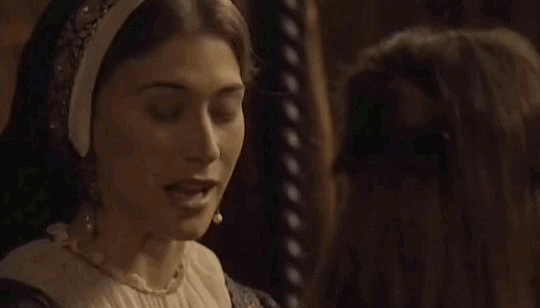
She finally made her way to Queen Anne who was sitting on her throne in front of the fireplace with the princess of Orange. Anne and Juana curtseyed and kissed and made some small talk. Shortly thereafter, the small talk faded. Juana then extended her salutations to the women on either side of the throne, including those from Angoulême, Alençon, and Dunois, as well as the niece of King Louis, Germaine de Foix. Four years after this visit, Germaine would marry Juana's widowed father, King Ferdinand.
The rest of the Queen's ladies were standing along the wall, but the Duchess of Bourbon grabbed Juana by the arm and told her it would take forever to greet and kiss all these ladies. She took Juana to her apartment. When she entered her antechamber she was met by Louis and Anne's daughter, Claude, who was two years old, in the arms of her governess' daughter. Madame de Tournon, the governess, stood behind a group of noblewomen and a group of little girls who were on their best behaviour. Claude took one look at Juana and burst into tears. She was taken away screaming at the top of her lungs.

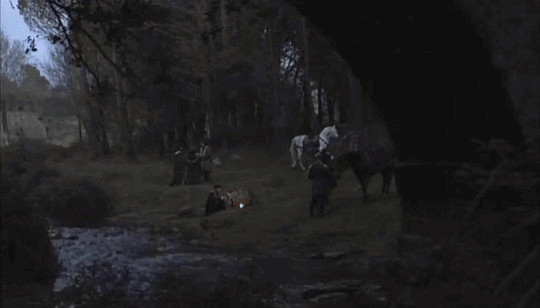
That evening Philip was wined and dined in considerable style. The king was observing the vigil of the Immaculate Conception so he fasted on bread and water and retired early. Juana was waited on by a deputation at seven o’clock with light refreshments. The king’s officer was followed by six pages dressed in the king’s red and yellow livery, each holding a candlestick in their hand. The Duchess of Bourbon followed carrying the preserves and Madame d’Angoulême carried the napkins. Madame de Nevers carried in the knives and forks followed by Charlotte d’Albret and Germaine de Foix, each carrying a dish of sugared almonds. The queen’s apothecary came in last in case Juana had any indigestion from the meal. Only ladies were allowed in the room and they left what they brought on a dresser and the beds.
Juana sat on a cushion on the floor with the Duchess of Bourbon who tried to put her at ease. The duchess rose at the end of the evening and diplomatically declared to Madame de Vendôme she was keeping Juana up and she needed her rest. She left Juana with Madame de Vendôme to show her the rest of her apartments and encouraged Juana to let her know if there was anything else she needed. To ensure there was to be nothing else needed, a procession of servants were furnishing Juana’s inner chamber with the best towels, bed-warmers, sponges, mirrors, nightcaps and pins. Even the basin of her close-stool was made of silver with gold plate around the rim.
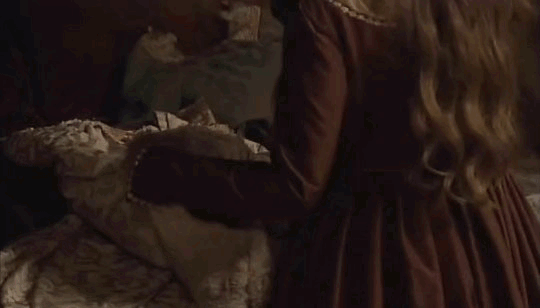
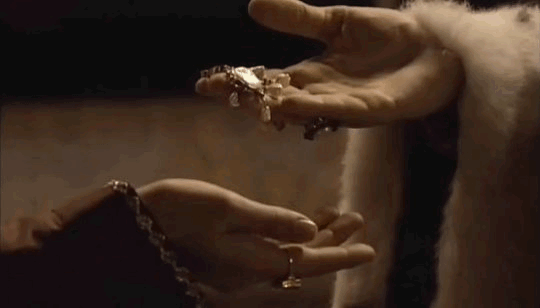
The next day, Queen Anne sent a purse of money for Juana to present in Anne’s name at mass. Juana refused to perform this act of vassalage and insisted she would only give money in her own name.
Anne waited for Juana to follow her out of the chapel but Juana lingered long enough to demonstrate she left on her own accord. Queen Anne was fuming and that evening Juana made her excuses saying she was ill to avoid the festivities. Several ladies of the French court carried spices to Juana.
Philip offered money in Louis’ name at mass that same day.

A few days later Juana appeared at dinner in Spanish style dress covered in jewels and cloth of gold. After supper she danced in the Spanish manner, impressing all with her elegance.
The entire visit was filled with banquets, dancing and many private suppers along with worship and thanksgiving. Unfortunately the dreadful weather made hunting impossible. The archducal couple would leave Blois on December 15 with King Louis accompanying them as far as Amboise. Madame d’Angoulême would entertain Juana and Philip for six days at her home in Cognac.

Louis was so pleased with the visit he dreamed of a peace treaty with Spain and Queen Anne’s hopes for the Habsburg marriage for her daughter were greatly increased.
Unfortunately, neither of these things happened. In April 1505, King Louis was gravely ill and the doctor’s feared for his life. He was forced to make a definitive decision regarding the marriage of his daughter Claude. In May 1506 he proclaimed in his will that six-year-old Claude would marry the eleven-year-old heir to the throne, Francois d’Angouleme. Claude eventually married Francois, who became King Francois I upon the death of Louis XII on January 1, 1515.
Sources : Further reading: “The Valois: Kings of France 1328-1589” by Robert Knecht,
“Juana the Mad: Sovereignty & Dynasty in Renaissance Europe” by Bethany Aram
#joanna of castile#juana i of castile#philip the handsome#juana la loca#spanish monarchy#isabel#johanna van castilie#european history#history#irene escolar
8 notes
·
View notes
Text
Anne of Austria (1601-1666) and her two children, the future Louis XIV, and Philippe, Cardinal Mazarin: Former Chief minister of France & François de Bourbon-Vendôme, son of César de Bourbon-Vendôme and Françoise de Lorraine, is a grandson of Henri IV. He is the first cousin of King Louis XIV. He remains single and dies without issue.
Louis XIV
King of France

Louis XIV, also known as Louis the Great or the Sun King, was King of France from 1643 until his death in 1715. His verified reign of 72 years and 110 days is the longest of any sovereign.
Born: September 5, 1638, Château de Saint-Germain-en-Laye, Saint-Germain-en-Laye
Died: September 1, 1715, Palace of Versailles, Versailles
Spouse: Françoise d'Aubigné, Marquise de Maintenon (m. 1683–1715), Maria Theresa of Spain (m. 1660–1683)
Children: Louis, Grand Dauphin, Louis Auguste, Duke of Maine, MORE
Grandchildren: Philip V of Spain, Louis, Duke of Burgundy, MORE
Parents: Louis XIII, Anne of Austria
Nicknames: Louis the Great, Sun King
Anne of Austria
Queen of Navarre

Anne of Austria was an infanta of Spain who became Queen of France as the wife of King Louis XIII from their marriage in 1615 until Louis XIII died in 1643. She was also Queen of Navarre until that kingdom was annexed into the French crown in 1620.
Born: September 22, 1601, Valladolid, Spain
Died: January 20, 1666, Val-de-Grâce Hospital, Paris
Grandchildren: Louis, Grand Dauphin, MORE
Children: Louis XIV, Philippe I, Duke of Orléans
Spouse: Louis XIII (m. 1615–1643)
Siblings: Philip IV of Spain, Maria Anna of Spain
Parents: Philip III of Spain, Margaret of Austria, Queen of Spain
Philippe I, Duke of Orléans
Brother of Louis XIV.

Monsieur Philippe I, Duke of Orléans, was the younger son of King Louis XIII of France and his wife, Anne of Austria. His elder brother was the "Sun King", Louis XIV. Styled Duke of Anjou from birth, Philippe became Duke of Orléans upon the death of his uncle Gaston in 1660.
Born: September 21, 1640, Château de Saint-Germain-en-Laye, Saint-Germain-en-Laye
Died: June 9, 1701, Parc St cloud, Saint-Cloud
Children: Philippe II, Duke of Orléans, Marie Louise d'Orléans, MORE
Great grandchildren: Louis XV, Marie Antoinette, MORE
Spouse: Elizabeth Charlotte, Madame Palatine (m. 1671–1701), Henrietta of England (m. 1661)
Siblings: Louis XIV
Grandchildren: Marie Adélaïde of Savoy, Louis, Duke of Orléans, MORE
Cardinal Mazarin
Former Chief minister of France

Jules Cardinal Mazarin, born Giulio Raimondo Mazzarino or Mazarini, was an Italian cardinal, diplomat and politician who served as the chief minister to the Kings of France Louis XIII and Louis XIV from 1642 to his death. In 1654, he acquired the title Duke of Mayenne and in 1659 that of 1st Duke of Rethel and Nevers.
Born: July 14, 1602, Pescina, Italy
Died: March 9, 1661, Vincennes
Nationality: French, Italian
Place of burial: Collège des Quatre-Nations, Paris
Full name: Giulio Raimondo Mazzarino
Siblings: Girolama Mazzarini, Michele Mazzarino
Organization founded: Académie royale de peinture et de sculpture
François de Vendôme, duc de Beaufort
Cousin of King Louis XIV

François de Vendôme, duc de Beaufort was the son of César, Duke of Vendôme, and Françoise de Lorraine. He was a prominent figure in the Fronde, and later went on to fight in the Mediterranean.
Born: January 16, 1616, Coucy Castle, Coucy-le-Château-Auffrique
Died: June 25, 1669, Heraklion, Greece
Great-grandparents: Antoine of Navarre, Jeanne d'Albret, MORE
Grandparents: Henry IV of France, Gabrielle d'Estrées, MORE
Parents: César, Duke of Vendôme, Françoise of Lorraine, Duchess of Vendôme
Uncle: Louis XIII

Louis, Anne, Philippe, Mazarin, Beaufort, and most importantly, Pistache
2K notes
·
View notes
Text

Bataille de Villaviciosa, 10 décembre 1710. 1836. Philip V and Louis-Joseph, Duke of Vendôme after winining the battle of Villaviciosa over count Guido Starhemberg on 10 December 1710.
#felipe v de españa#philip v of spain#duc de vendôme#louis-joseph de vendôme#le grand vendôme#bourbon#bourbon-anjou#bourbon-vendôme#visual
1 note
·
View note